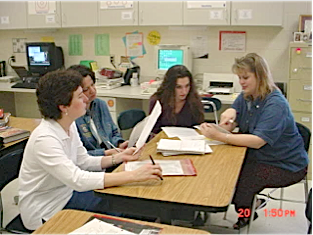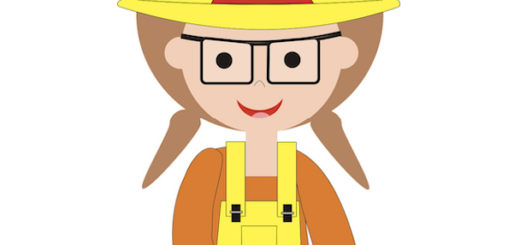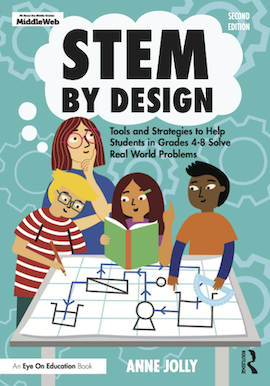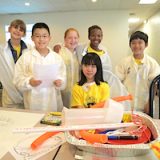10 Criteria for Authentic STEM Programs
According to studies and writings about STEM education, the primary goal of a STEM program is to provide deep, focused, integrated learning in science, technology, engineering, mathematics, as well as interpersonal skills. As we think about STEM project design, specific criteria are fundamental. I’ll summarize the criteria I believe to be critical here:
Ten Criteria for STEM Programs
- Integrates and applies content and skills from the four STEM disciplines.
- Uses inquiry based instruction and a problem based learning approach.
- Involves students in addressing relevant real-world challenges.
- Uses an engineering design process for learning and problem-solving.
- Requires student collaboration and teamwork to plan, design, and create solutions.
- Focuses on developing life and leadership skills.
- Promotes clear and effective communication skills in multiple ways.
- Considers failure as a normal part of creating successful solutions.
- Includes all students, regardless of background, ability, gender, or ethnicity.
- Connects students to real situations, careers, and life applications.
Many worthwhile programs contain some STEM characteristics, but a true STEM program includes most or all of those ten criteria. Consider how these criteria match up with some of the most popular approaches to STEM in U.S. schools today. This information might be useful if you and your fellow teachers are called on to help design or set up STEM programs and classes.
While these are not the only criteria, you can use them to help you determine whether a program currently purporting to be STEM meets the standards for an integrated STEM curriculum. Remember, good science, math and technology programs can have many different “looks,” but if we’re going to call a program “STEM” then these ten STEM criteria should be at the center.
It’s also worth noting that these ten criteria are intentionally embedded in STEM programs and not left to chance. Students are not thrown together in teams with the hope that they will be productive. Learning to work together productively is a planned and purposeful part of STEM curricula.
Supporting STEM

Note that these elements can be used to identify STEM programs in schools and will be part of the practices in STEM classrooms. Also notice that these criteria are intentional—they are not left to chance. For example, students are not thrown together in teams with the hope that they will be productive. Helping students learn to work together productively is a goal of STEM curricula, as important as any other goal.
From Chapter 5 of STEM by Design by Anne Jolly (Routledge 2025). All Rights Reserved.











